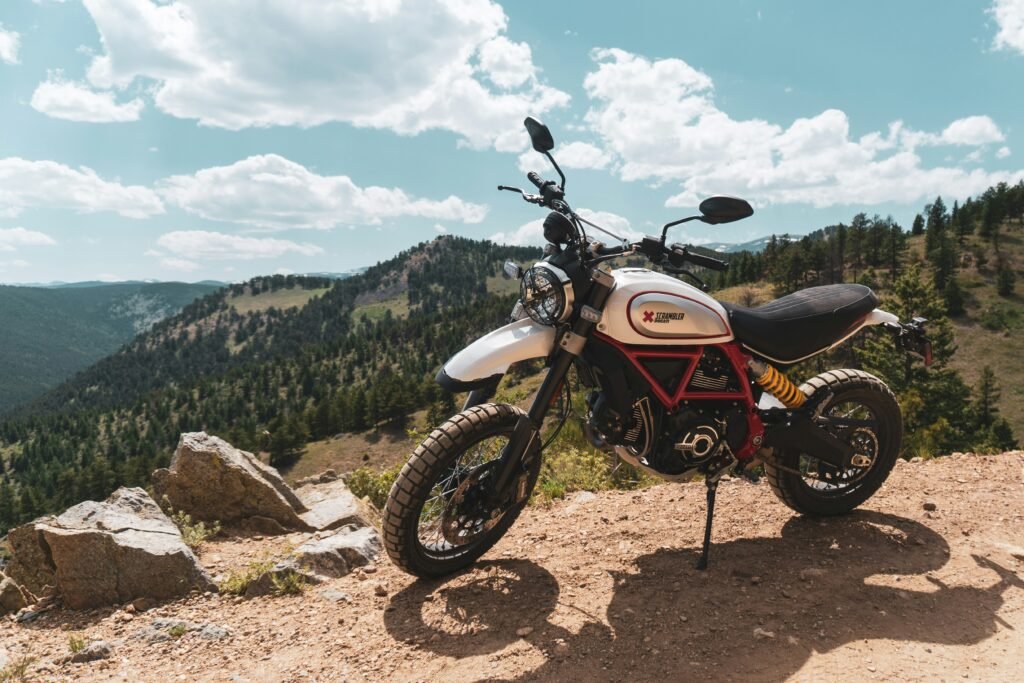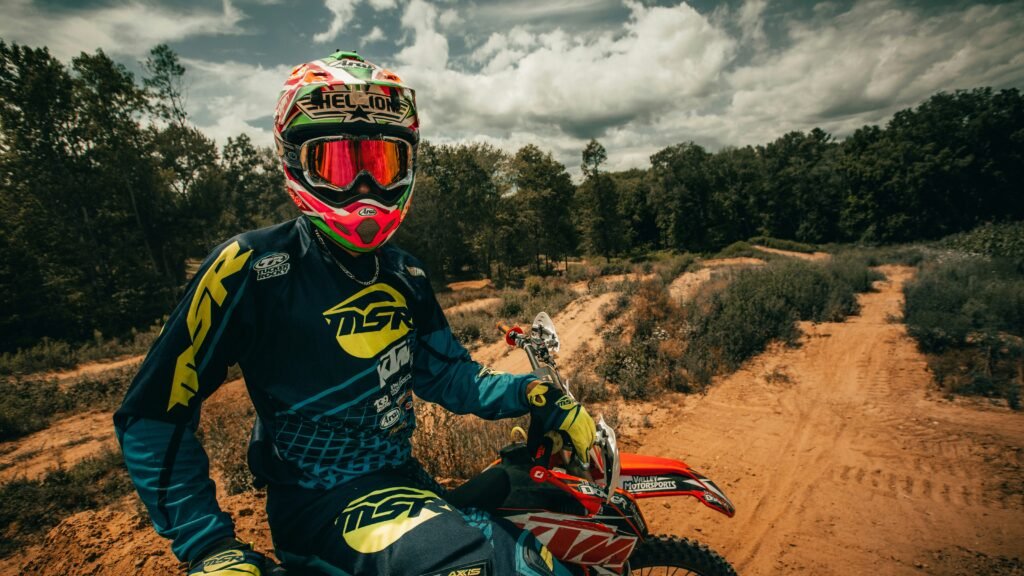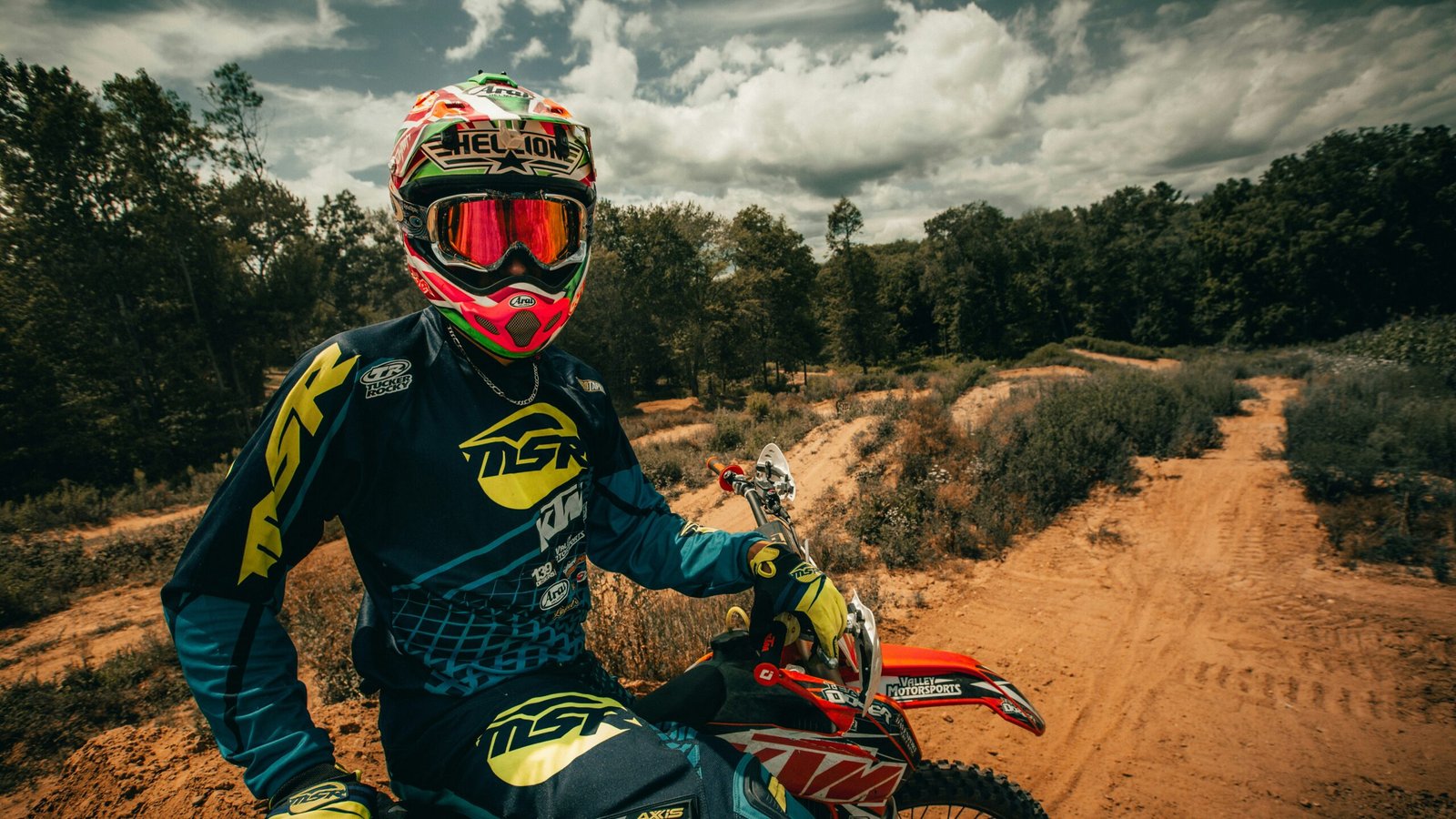Unleash Your Adventure with the Perfect Off-Road Bike
Are you ready to embark on thrilling off-road adventures? Look no further than finding the perfect off-road bike to unleash your excitement! In this article, we will guide you through the process of choosing the ideal bike for tackling rugged terrain. From considering bike types to examining important features, we’ll equip you with the knowledge you need to make an informed decision. Get ready to conquer the wilderness and experience the thrill of off-road cycling like never before!

This image is property of images.unsplash.com.
Consider the Terrain
When choosing an off-road bike, it is crucial to consider the type of terrain you plan to ride on. Off-road terrain can vary widely, from smooth dirt trails to rocky and technical mountain trails. Evaluating the type of terrain will help you determine the specific features and components you need in your bike to navigate and conquer the challenges it presents.
To begin, evaluate the difficulty level of the terrain you plan to ride on. Are you a beginner looking for a bike to explore easy, beginner-friendly trails, or are you an experienced rider seeking adrenaline-pumping adventures on more challenging terrain? Understanding the difficulty level will help you choose a bike that is suitable for your skills and abilities.
Identifying any specific challenges or obstacles you may encounter is also important. Some off-road areas may have steep climbs, sharp descents, or tight corners that require specialized features and components on your bike. By considering these challenges beforehand, you can select a bike that is tailored to handle them, ensuring a safe and enjoyable riding experience.
Frame Material
The frame material plays a significant role in the weight, durability, and responsiveness of an off-road bike. Three common frame materials you will encounter are aluminum, steel, and carbon fiber.
Aluminum frames are lightweight and stiff, making them a popular choice for off-road biking. They offer excellent power transfer and responsiveness, allowing you to accelerate quickly and maneuver with precision. However, aluminum frames may transmit more vibrations from the trail, leading to a slightly harsher ride.
Steel frames are known for their durability and smooth ride quality. They absorb shocks and vibrations better than aluminum, making them ideal for long and rough rides. Steel frames can be heavier than aluminum, but advancements in frame design have resulted in lighter steel options for off-road biking.
Carbon fiber frames are the lightest and often the most expensive option. They offer a comfortable ride, excellent power transfer, and impressive vibration damping properties. Carbon fiber frames are favored by competitive off-road riders seeking maximum performance and responsiveness. However, they can be more susceptible to impacts and require careful maintenance and inspection.
When choosing a frame material for your off-road bike, consider your riding style, preferences, and budget. Aluminum frames are a great all-around choice, steel frames excel in durability and comfort, while carbon fiber frames offer top-tier performance for those willing to invest.
Suspension Systems
Off-road biking often involves encountering rough terrain, making suspension systems a crucial consideration when choosing your bike.
Two main types of suspension systems are commonly found in off-road bikes: hardtail and full-suspension.
Hardtail bikes have suspension forks in the front, providing shock absorption and improving control over rough trails. They are generally lighter and more efficient for climbing, making them a good choice for riders who prioritize speed and stability. However, hardtails offer limited rear suspension, making them less forgiving on technical descents.
Full-suspension bikes, as the name suggests, come with both front and rear suspension. These bikes excel in providing maximum traction, comfort, and control on rough and technical terrain. They absorb impacts better, allowing you to maintain better control and ride more confidently. Full-suspension bikes are ideal for riders seeking a smoother and more forgiving ride, especially on challenging descents.
When determining the amount of suspension travel needed for your intended use, consider the type of terrain you will be riding on and your personal preferences. Rougher and more technical trails may require more suspension travel, while smoother trails may only need a minimal amount. Strike a balance between comfort, control, and efficiency to select the right suspension system for your off-road adventures.
Tire Size and Tread
The right tire size and tread pattern can significantly impact your off-road biking experience. It is important to evaluate the optimal tire size for the terrain you plan to ride on.
Tire size is determined by the width and diameter of the tire. Wider tires offer more traction and stability, particularly on loose and uneven surfaces. They can also provide a more comfortable ride by absorbing vibrations. Narrower tires, on the other hand, excel in speed and maneuverability, making them suitable for smoother and faster trails.
The tread pattern of the tire is equally important. Different tread patterns offer varying levels of grip and control on different surfaces. For example, tires with a more aggressive and knobby tread pattern are well-suited for loose and muddy terrain, offering excellent traction. On the contrary, tires with a smoother tread pattern are ideal for hard-packed dirt or pavement, providing low rolling resistance.
When choosing your tire size and pattern, consider the specific conditions of the off-road terrain you plan to ride on. If you anticipate a mix of challenging and diverse terrain, consider versatile all-terrain tires that can handle a range of conditions. Choosing the right tire size and tread will ensure optimal performance and safety during your off-road adventures.

This image is property of images.unsplash.com.
Gearing System
The right gearing system can greatly enhance your off-road biking experience, allowing for efficient climbing and speed control.
There are two main gearing options to consider: single-speed and multi-speed.
Single-speed bikes have only one gear, requiring you to rely on your own leg power for any changes in speed and terrain. They are simple, lightweight, and low maintenance. Single-speed bikes are excellent for riders who prefer simplicity and don’t encounter too many varied terrains or steep climbs.
Multi-speed bikes, on the other hand, offer a range of gears that can be shifted to match different terrains and riding conditions. They provide more flexibility and control, allowing you to easily navigate steep ascents and maintain a comfortable speed on flat or downhill sections. Multi-speed bikes often come with multiple gear ratios, enabling riders to fine-tune their pedaling cadence for a more efficient and enjoyable ride.
When examining different gearing options, consider the number of gears, gear ratios, and shifting mechanisms. The number of gears determines the range and versatility of your bike. Gear ratios determine the relative sizes of the front and rear gears, impacting how easy or hard it is to pedal in different situations. Shifting mechanisms, such as trigger shifters or thumb shifters, affect the ease and precision of gear changes.
Choose a gearing system that suits your riding style, the type of off-road terrain you will encounter, and the level of control you desire. Optimal gearing will ensure you can conquer steep climbs, maintain speed on flat stretches, and enjoy a well-rounded off-road biking experience.
Braking System
A reliable and responsive braking system is essential for every off-road bike, ensuring safe and confident stopping power in various trail conditions.
There are two main types of braking systems to consider: disc brakes and rim brakes.
Disc brakes, whether hydraulic or mechanical, offer superior stopping power and modulation. They perform consistently in wet, muddy, or dusty conditions, making them ideal for off-road biking. Disc brakes provide strong and reliable stopping power, allowing you to confidently navigate downhills and technical trails. They require less hand effort to engage, reducing fatigue during long rides. Additionally, disc brakes are generally easier to maintain as they are less affected by debris and wear.
Rim brakes, on the other hand, use friction between the brake pads and the wheel’s rim to slow the bike down. They are lightweight, simple, and cost-effective. Rim brakes provide adequate stopping power on most off-road terrain and are less complex to maintain. However, they may be less effective in wet or muddy conditions, potentially compromising your control and safety.
When deciding on a braking system, consider the braking power, modulation, and maintenance requirements. Disc brakes offer premium performance and reliability, while rim brakes are a more budget-friendly option. Choose a system that matches your riding style, the terrain you plan to ride on, and your personal preferences for stopping power and control.

This image is property of images.unsplash.com.
Handlebars and Grips
Choosing the right handlebars and grips can greatly impact your comfort and control during off-road adventures. There are several handlebar options to explore: flat, riser, and drop bars.
Flat handlebars are the most common choice for off-road biking. They provide a comfortable and upright riding position, offering excellent control and maneuverability. Flat handlebars are ideal for technical terrains that require quick steering inputs and precise control.
Riser handlebars offer a more upright riding position than flat handlebars. They provide added height and leverage, which can be beneficial for riders seeking a more comfortable and relaxed posture during longer rides. Riser handlebars are often preferred by riders who prioritize comfort and endurance over aggressive handling.
Drop bars are typically associated with road biking, but they can also be used for off-road biking. Drop bars offer multiple hand positions, allowing for a more aerodynamic riding posture and increased speed. However, drop bars reduce maneuverability and control, making them less ideal for technical off-road trails.
In addition to handlebars, consider the grips you will use. Grips should provide comfort and minimize hand fatigue, especially during longer rides. There are various grip materials and designs available, catering to different preferences and riding styles. Experiment with different handlebars and grips to find the combination that offers the ideal comfort and control for your off-road biking pursuits.
Components and Accessories
High-quality components and accessories can greatly enhance your off-road biking experience, providing reliability, durability, and added versatility.
When it comes to components, focus on the drivetrain, pedals, and saddle. Research reputable brands and consider components that offer smooth shifting, solid construction, and long-lasting performance. A reliable drivetrain will ensure efficient power transfer, allowing you to ride with ease. Choosing the right pedals is crucial for maintaining traction and control, especially on rough terrains. Lastly, a comfortable and supportive saddle will enhance your long-distance riding comfort and prevent discomfort or pain.
In addition to components, consider accessories that can improve your biking experience. Lights are essential for safety when riding in low-light conditions or at night. Mudguards can prevent dirt and mud from splattering on you or your bike, keeping you cleaner during wet or muddy rides. Racks or bags can add versatility to your off-road bike, allowing you to carry necessary gear or supplies for longer adventures.
When selecting components and accessories, prioritize reliability and durability. Off-road biking can be demanding, and having components and accessories that can withstand the rigors of the trails is crucial. Research trusted brands, read reviews, and consult with experienced riders to ensure you choose the best options for your off-road biking needs.
Size and Fit
Choosing the right size and fit for your off-road bike is crucial for optimal comfort, control, and efficiency. Ill-fitting bikes can lead to discomfort, inefficient power transfer, and compromised handling.
To determine the appropriate bike size, consider your height and body proportions. Many manufacturers provide size guides, often based on the rider’s height. These guides can be a helpful starting point, but it’s important to remember that individual body proportions can vary. Consider the reach, stack height (the vertical distance from the bottom bracket to the top of the head tube), and standover clearance (the height between the top tube and the ground when straddling the bike). These measurements will determine your riding position, clearance, and overall comfort on the bike.
To ensure a proper fit, it’s recommended to get professionally fitted or test ride the bike before making a final decision. Professional bike fitting services take into account your body measurements, flexibility, riding style, and preferences to determine the ideal frame size, saddle position, and handlebar height. If professional fitting is not available, take the opportunity to test ride the bike and assess how it feels under your body. Pay attention to your posture, reach, and overall comfort to determine if the bike suits your anatomical needs.
Achieving the right size and fit may require some trial and error, but it is worth the effort. A bike that fits well will enhance your performance, reduce the risk of injury, and maximize your enjoyment on the trails.
Budget Considerations
Setting a budget range for your off-road bike purchase is an important step in the decision-making process. Off-road bikes come at various price points, and balancing your budget with your desired features and performance is essential.
Consider how much you are willing to spend and what features and components are most important to you. Research and compare prices of different brands and models to understand what you can get within your budget range. Keep in mind that while more expensive options may offer higher quality components and enhanced performance, there are also budget-friendly options that can still provide an enjoyable off-road biking experience.
To get the most value for your budget, prioritize components that have a direct impact on the bike’s performance and safety. For example, investing in a reliable drivetrain and a quality suspension system can greatly enhance your off-road experience. Certain accessories, such as lights or a saddlebag, may be more affordable and can be added later if they are not essential for your initial rides.
Strike a balance between your budget and the features you desire, keeping in mind that a well-built and properly maintained bike can last for years, providing countless hours of off-road enjoyment. By doing your research and being mindful of your budget, you can find the perfect off-road bike that meets your needs and exceeds your expectations.
In conclusion, choosing the perfect off-road bike requires careful consideration of various factors. Evaluating the terrain, exploring frame materials, understanding suspension systems, selecting tire size and tread, deciding on the gearing system and braking system, and choosing suitable handlebars and grips are all crucial steps. Researching components and accessories, as well as ensuring the right size and fit, will greatly enhance your off-road biking experience. Lastly, balancing your budget with the desired features and performance will help you find the best off-road bike that accompanies you on countless adventures. Unleash your off-road biking spirit and enjoy the thrill and freedom of exploring nature on two wheels!
